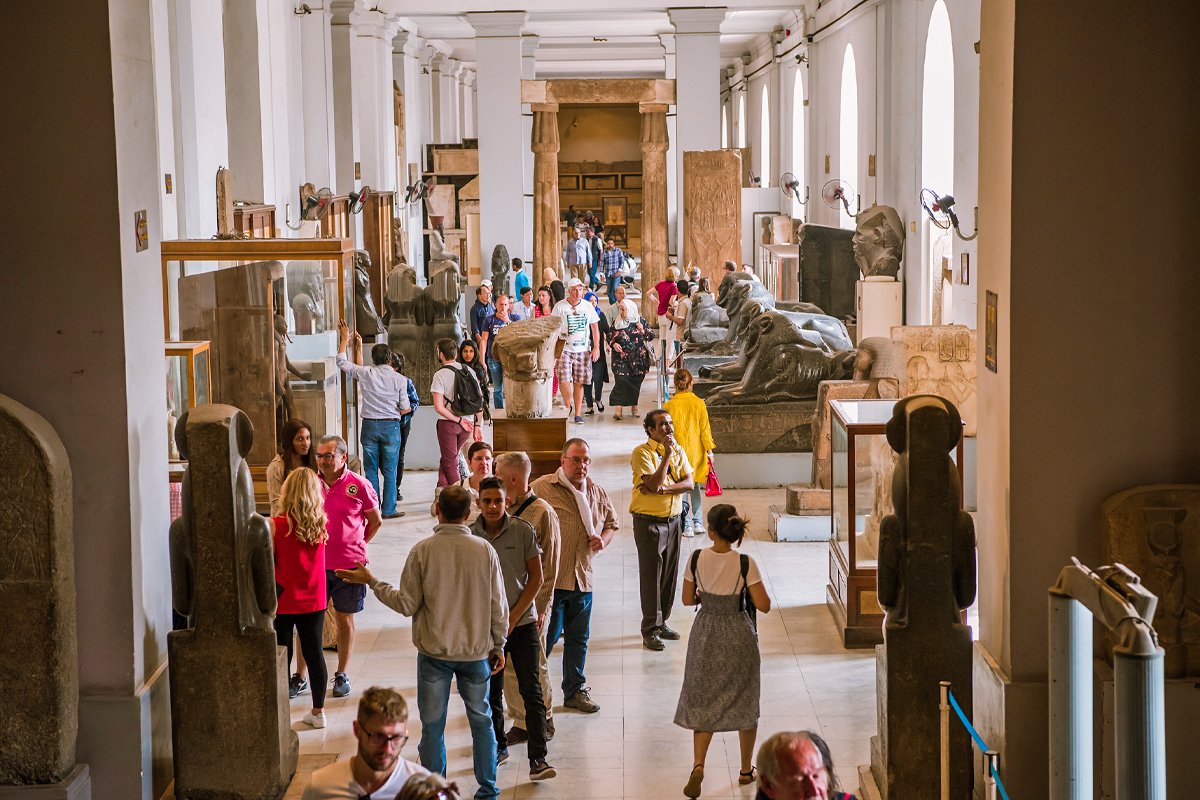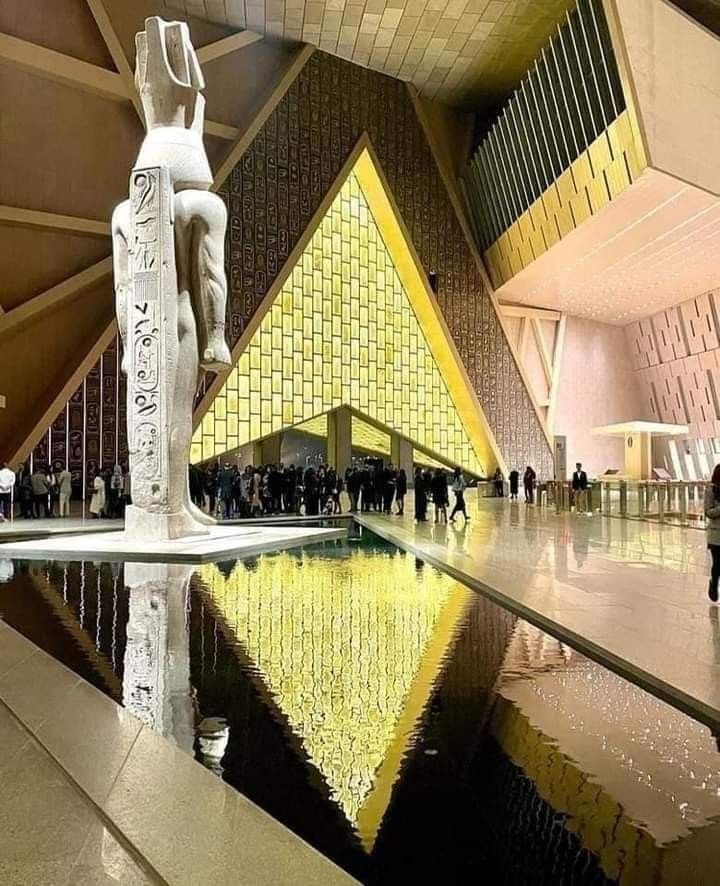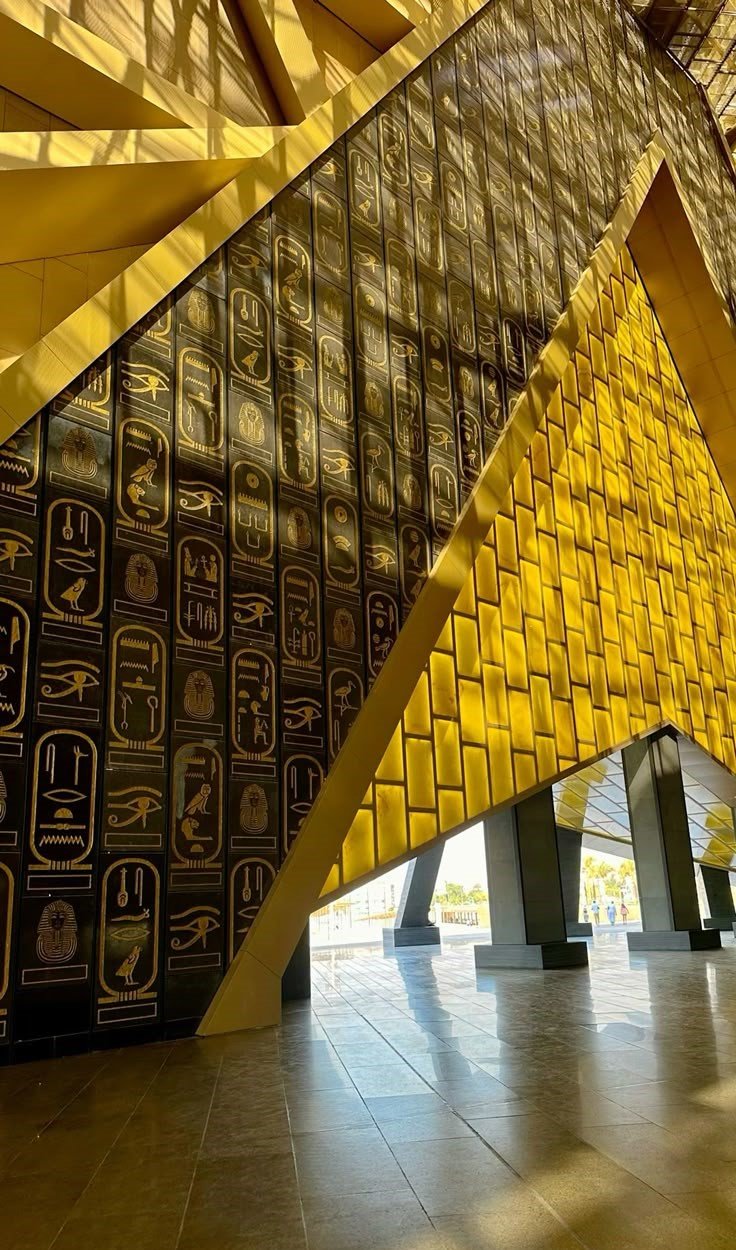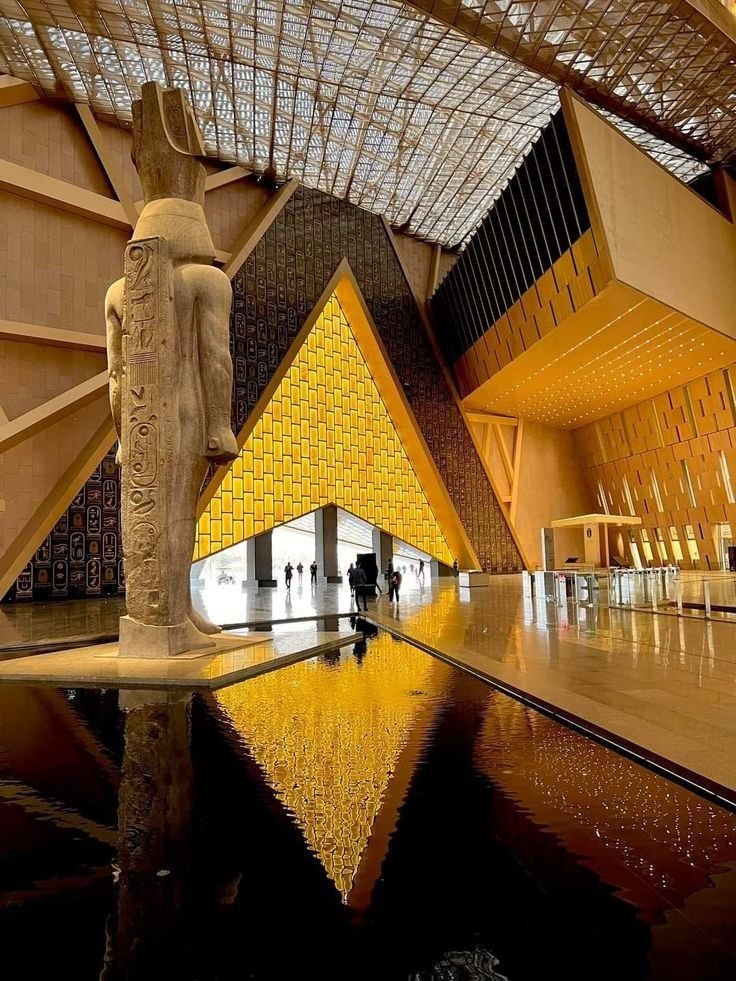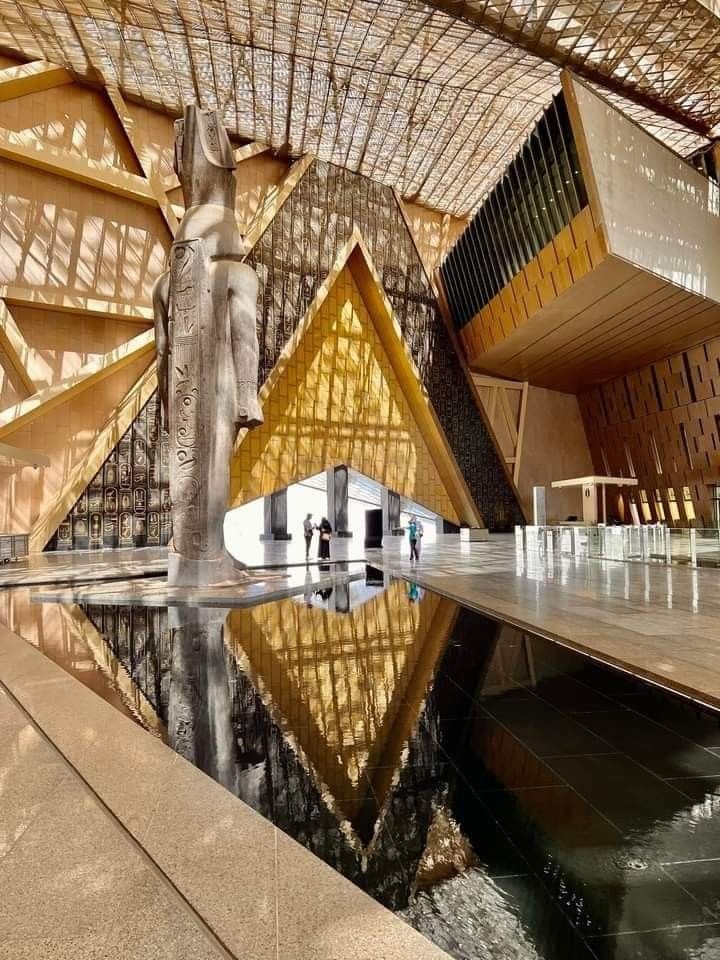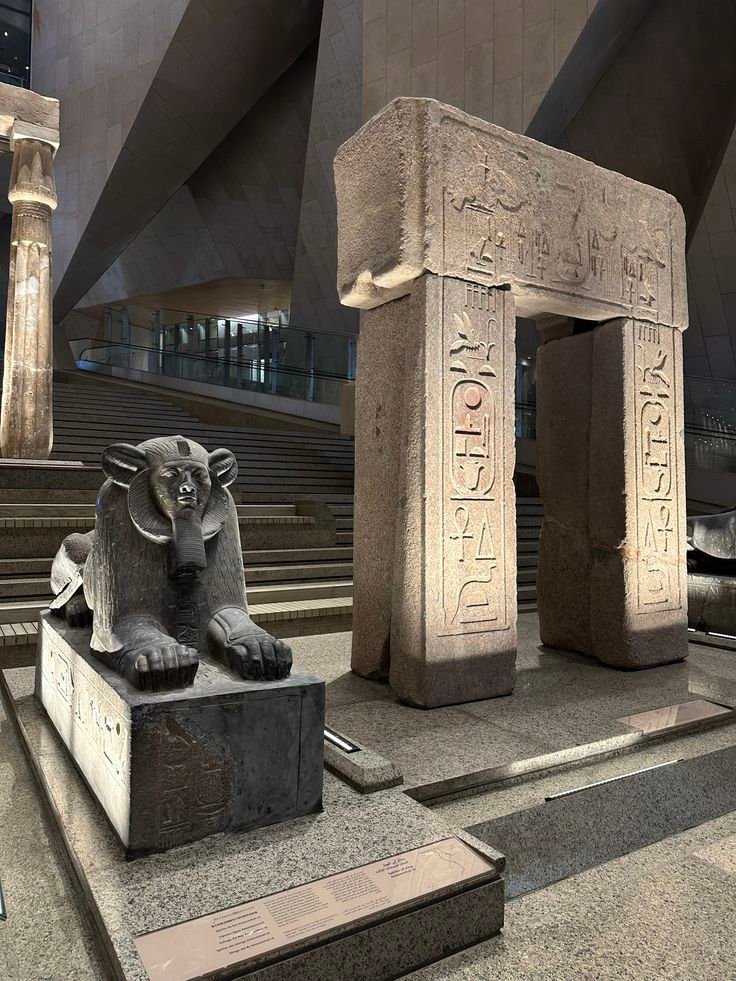Overview
The Grand Egyptian Museum (GEM)—also known as the Giza Museum—is one of the most anticipated cultural landmarks of the 21st century and a cornerstone of Egypt’s national heritage strategy. Located just 2 kilometers from the Giza Pyramids, it stands as the world’s largest archaeological museum, designed to house, conserve, and showcase the grandeur of ancient Egypt like never before.
With cutting-edge architecture, modern display technologies, and a monumental collection of ancient treasures, the GEM is more than just a museum—it is a global cultural destination that blends Egypt’s storied past with a bold, innovative future.
🌍 Location and Vision
Built on a 50-hectare site overlooking the Giza Plateau, the museum is strategically positioned to create a visual and symbolic link between modern Cairo and ancient Egypt. It’s intended to:
Be a universal gateway to ancient Egyptian civilization
Showcase the largest collection of Egyptian antiquities in the world
Function as an international center for education, research, and heritage preservation
The project has been overseen by Egypt’s Ministry of Tourism and Antiquities and supported by international funding and partnerships, including Japanese cooperation through the JICA.
🏛️ Architectural Marvel
The GEM was designed by the Irish architectural firm Heneghan Peng, following an international competition. The structure is oriented diagonally to frame views of the Pyramids of Khufu and Menkaure, making it a visual extension of the ancient landscape.
Highlights of the architectural design include:
A massive triangular façade of translucent alabaster stone
A vast Grand Atrium with a statue of Ramses II as the central focal point
Panoramic glass walls offering views of the Pyramids
An inviting Grand Staircase, flanked by massive statues and leading to the exhibition halls
Eco-friendly, earthquake-resistant construction with advanced climate control for preservation
🔍 Collections and Exhibits
Once fully open, the GEM will display over 100,000 artifacts, many of which have never been seen before. The museum is structured chronologically and thematically to provide a full picture of ancient Egyptian civilization, from prehistory to the Greco-Roman era.
⭐ Tutankhamun Galleries
The crown jewel of the museum will be the entire collection of King Tutankhamun’s treasures, gathered for the first time in one place.
Over 5,000 artifacts from the boy king’s tomb, including his iconic golden mask, chariots, jewelry, weapons, and personal belongings.
Displayed using modern exhibition techniques, interactive screens, and immersive environments.
🏺 Main Exhibition Halls
Divided into thematic zones:
Kingship and Power – Royal iconography, monuments, and leadership
Religion and Belief – Gods, temples, afterlife, mummification practices
Daily Life in Ancient Egypt – Tools, clothing, cosmetics, toys, and food artifacts
Warfare and Economy – Military technology, trade items, and tools
Greco-Roman Period – Later cultural influences and transitions
🧪 Conservation Center
One of the world’s largest and most advanced artifact conservation labs
Hosts restoration projects for statues, papyri, textiles, ceramics, wood, and metals
Includes a learning and training center for international researchers and students
👨👩👧👦 Visitor Experience
The GEM is designed not just for scholars, but also for families, students, and tourists of all backgrounds. Key visitor features include:
Children’s Museum – With interactive educational exhibits tailored for young visitors
Theaters and VR experiences – To bring ancient Egypt to life
Gardens and sculpture parks – Outdoor spaces for relaxation and cultural reflection
Restaurants, cafés, and gift shops – Blending modern comfort with cultural exploration
Universal accessibility – Designed to accommodate all visitors, including those with disabilities
🗓️ Status and Opening Phases
As of now, the Grand Egyptian Museum is partially open for trial visits and limited tours, with a full grand opening expected soon (dates subject to official announcements). Early access experiences have included the Grand Atrium, Ramses II statue, and some exhibition previews.
Visitors can already enjoy guided tours of selected open areas and the exterior, which offers dramatic views of the Giza Plateau.

